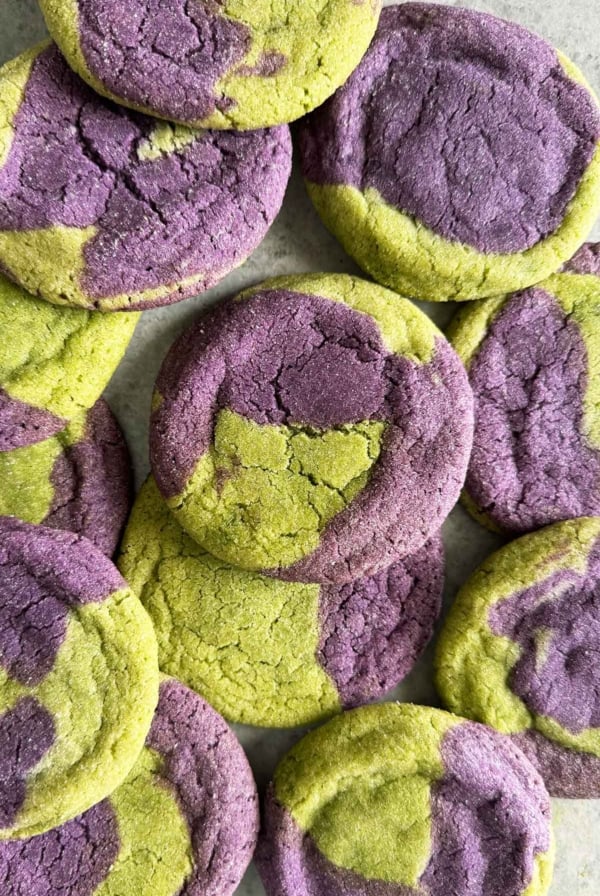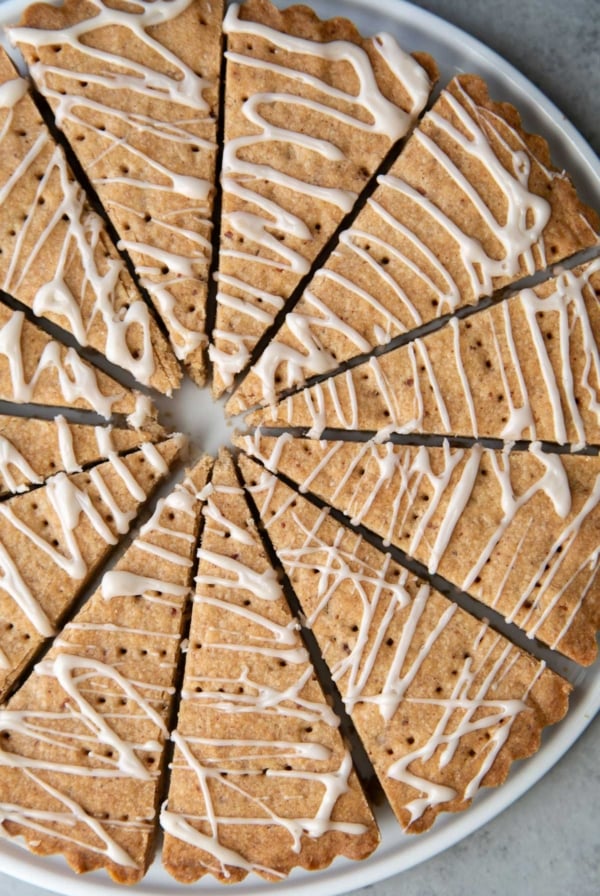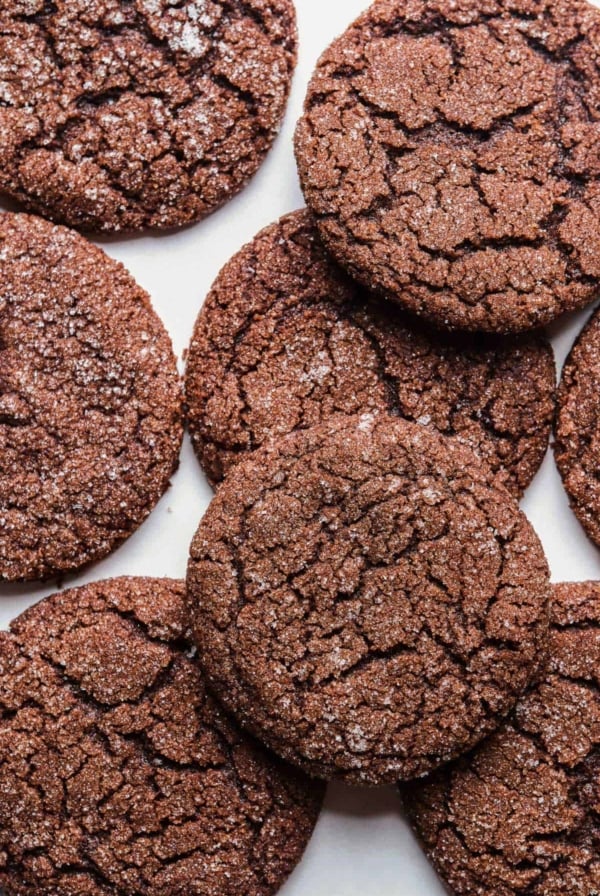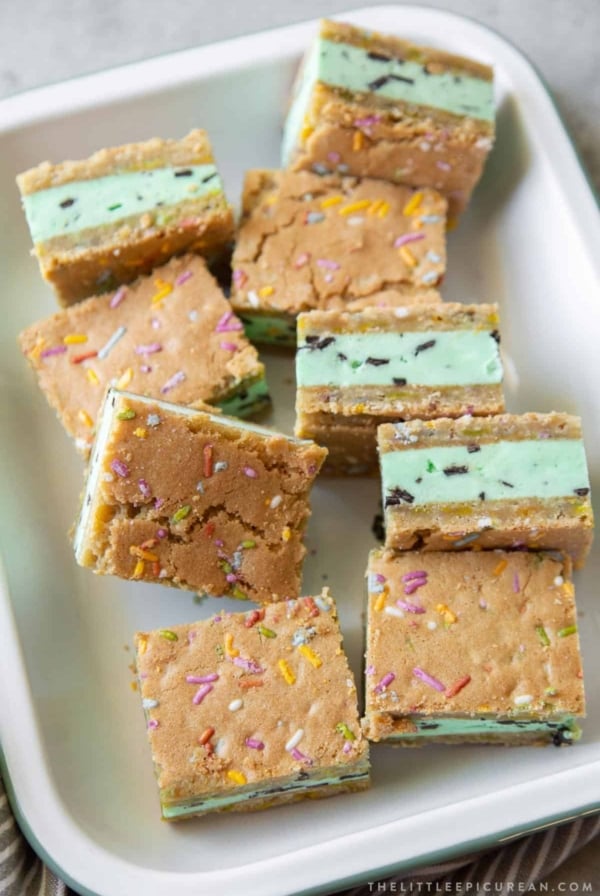Lemon shortbread cookies are made with a handful of simple ingredients. Fresh lemon zest gives these cookies a punch of bright flavor.
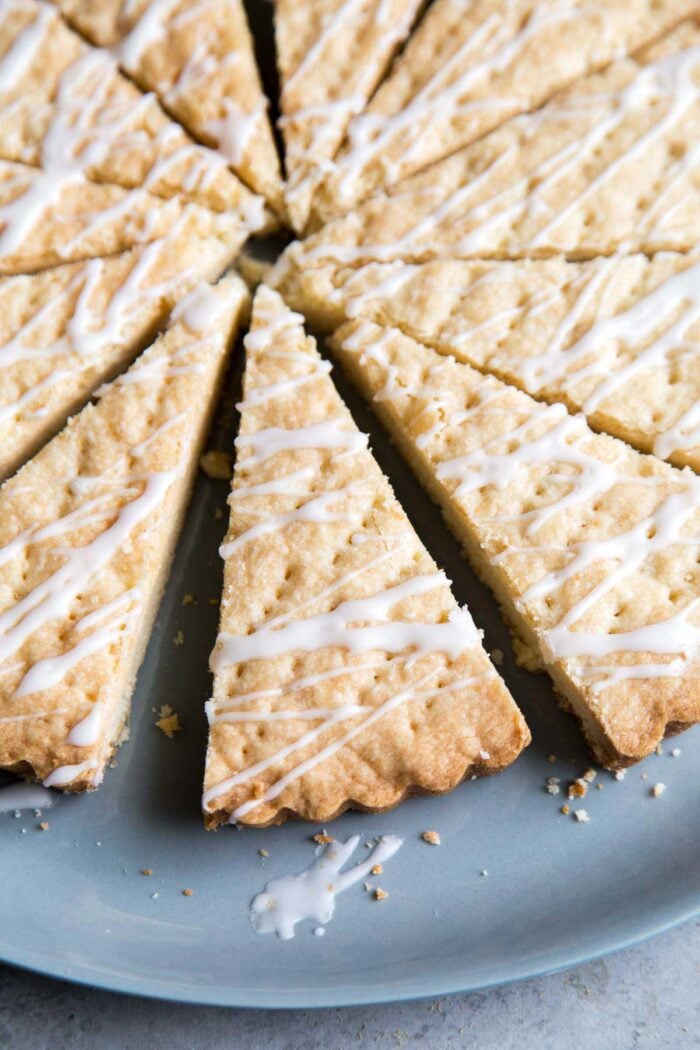
Shortbread cookies originated in Scotland during the 16th century. In the United States, Walkers is among the most popular and most commonly available Scottish shortbread. Shortbread was originally made with oats, but most of today’s shortbreads are made with wheat flour.
The classic round shape with fluted edges are meant to represent the sun and its shining rays. Here’s a delicious springtime inspired treat- lemon shortbread wedges!
The shortbread cookie dough is flavored with freshly grated lemon zest. After baking, it’s drizzled with a sweet lemon glaze.These lemon shortbread wedges melt in your melt. They’re crumbly, slightly sweet, and perfect with a a cup of coffee or tea!
Ingredients
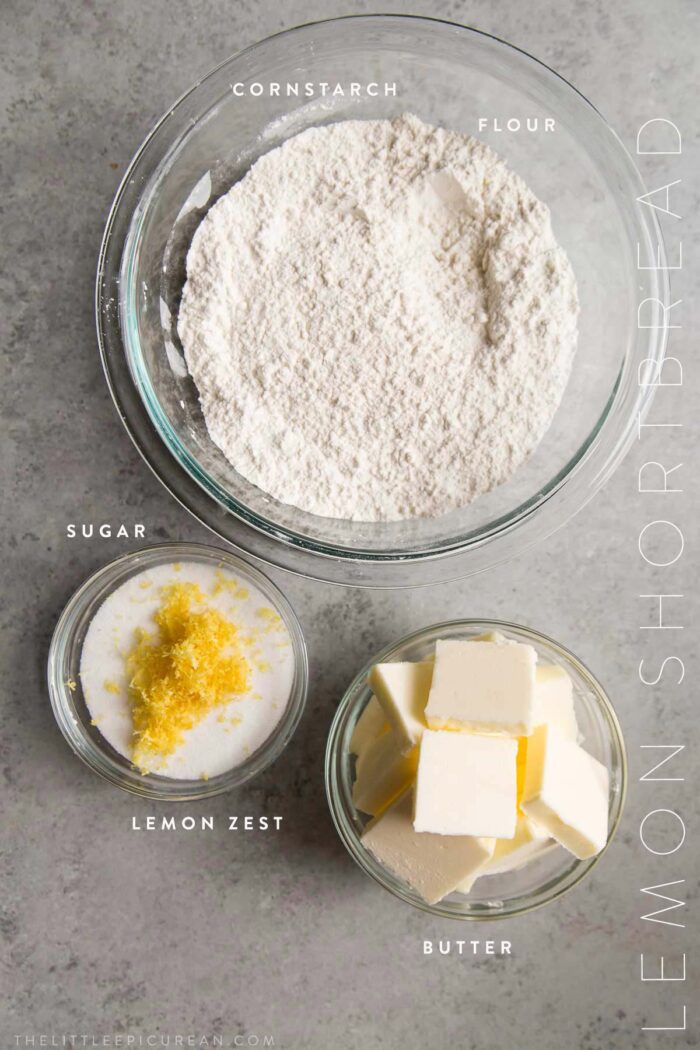
Very few ingredients are needed to make shortbread cookies. As such, it’s important to use high quality ingredients. Use the good butter for this. Much of the flavor comes from the butter and lemon zest.
This recipe works with all citrus fruits. Try lime zest, orange zest, or grapefruit zest. Or, use a mixture of different citrus zest! Or, try it with ground nuts like these pecan shortbread cookies.
How to Zest Citrus Fruit
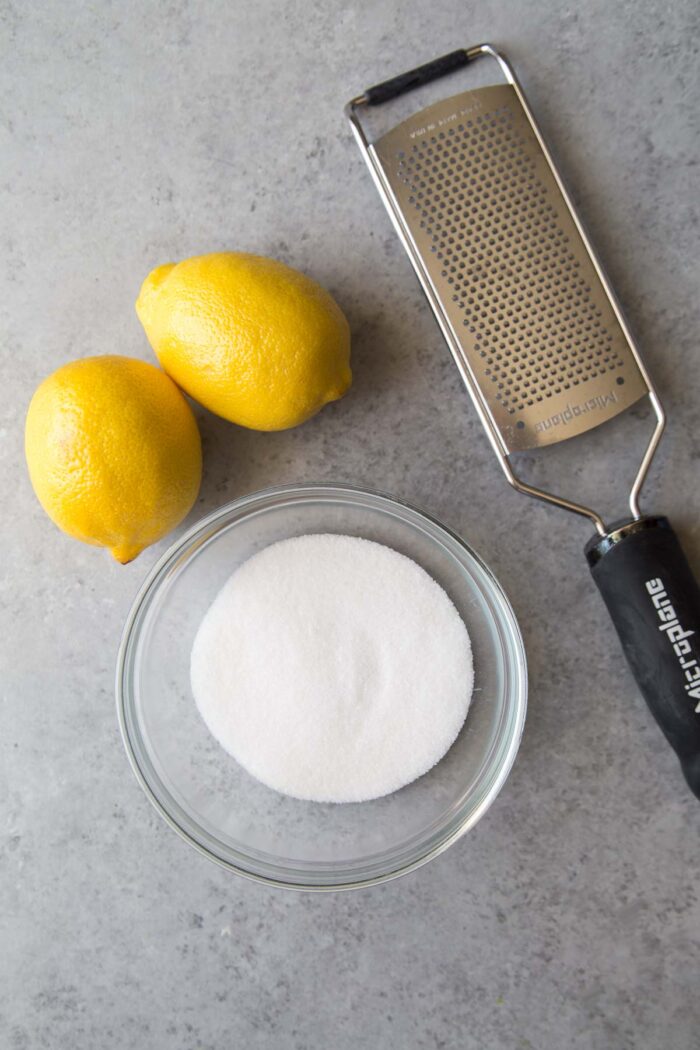
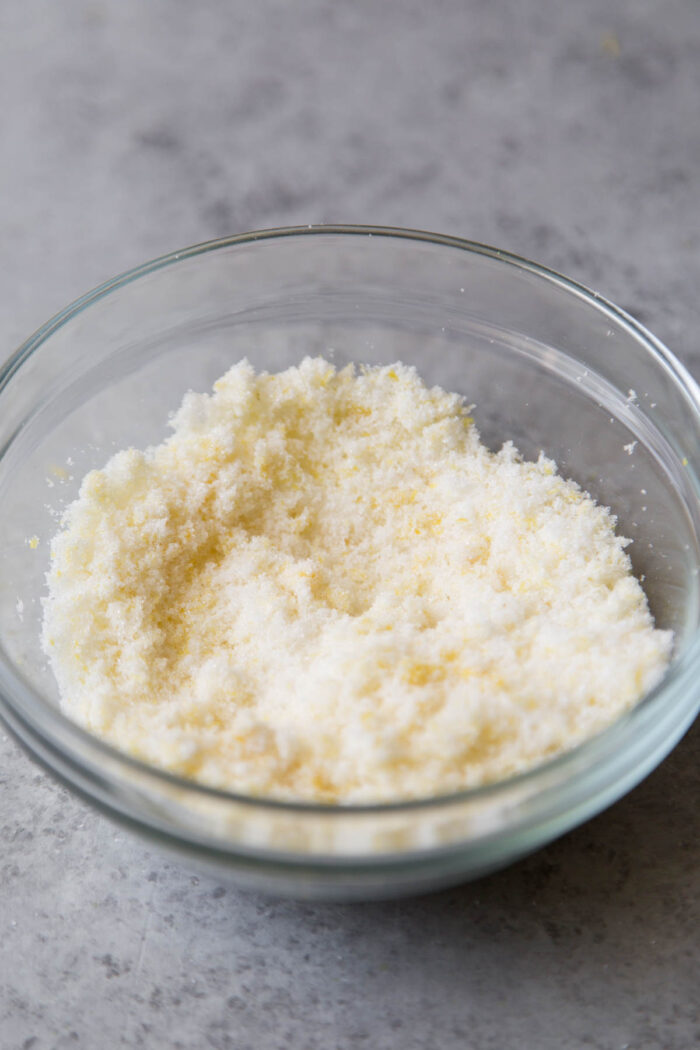
The peels of citrus (such a lemon, lime, orange, and grapefruit) are rich in aromatic oils. These oils add bright flavor to baked goods and beverages.
When possible, opt for organic fruit for zesting. This is because pesticides often accumulate in the peel of the fruit. Otherwise, be sure to thoroughly scrub the citrus under hot water before use.
There are several ways to zest: peel in wide strips, thin ribbons, or fine gratings. Use a grater with tiny small holes for finely grated zest used in this recipe. (Recommended graters: classic microplane and fine grater.)
Rub the finely grated lemon zest into the granulated sugar. This helps to extract the lemon oils from the peel. It results with a bright, more flavorful finish.
NOTE: Be sure to avoid cutting into the white pith of the citrus. The pith is bitter and not pleasant tasting.
Assembly
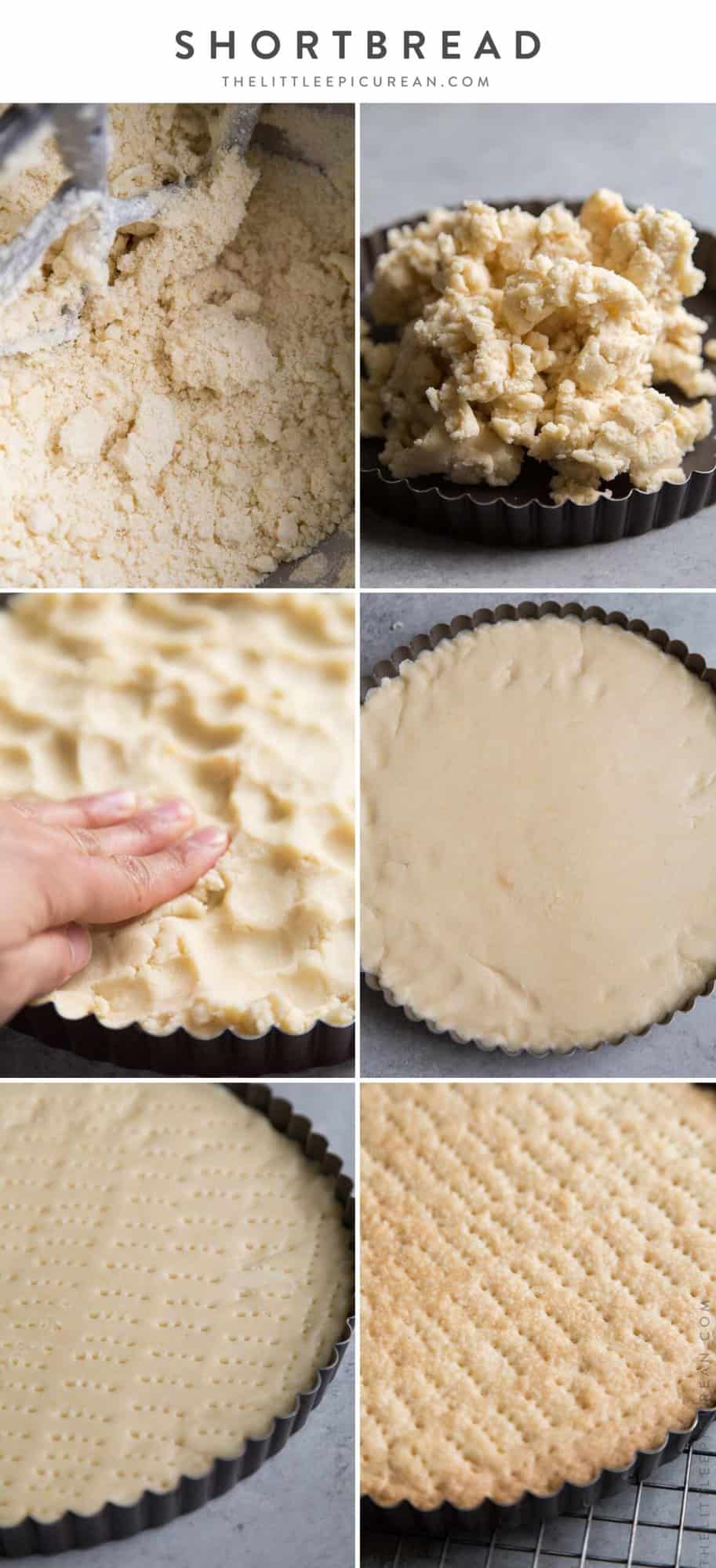
- Use a stand mixer or electric hand mixer to combine dough.
- The shortbread dough will form large clumps. Dump it into a 9-inch fluted tart shell pan.
- Use your fingers or the flat bottom of drinking glass to press dough into an even layer.
- TIP: Use a small piece of parchment paper to smooth out the shortbread dough!
- Use the tines of a fork to dock the dough all over.
- Bake just until the shortbread cookie begins to color. It is better to err on the side of under-baked versus over-baked.
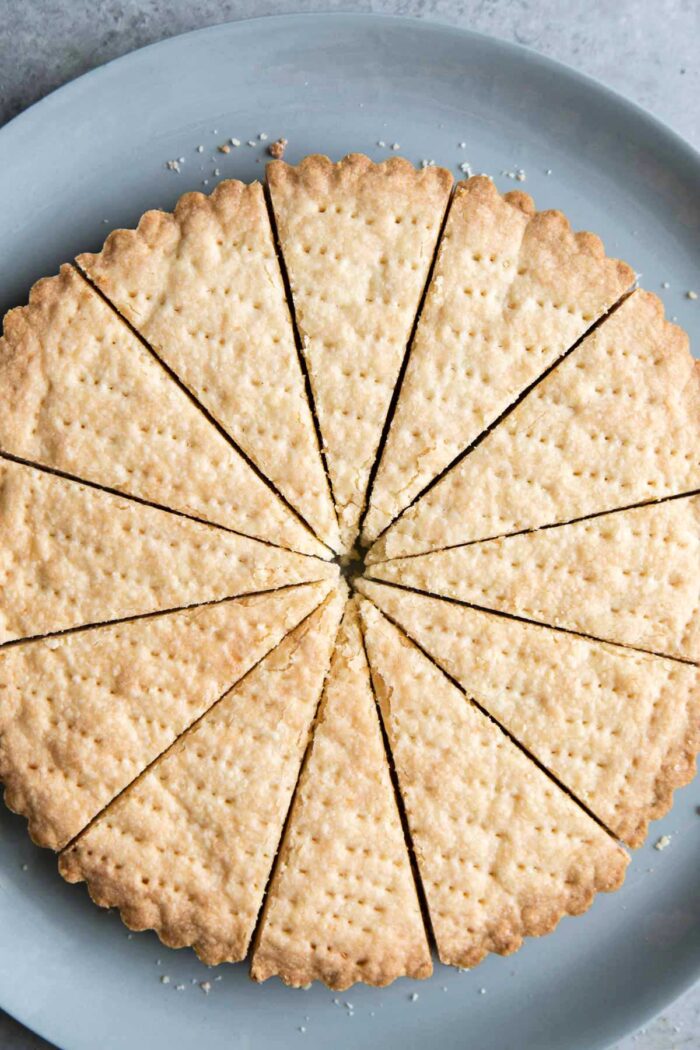
Cut Shortbread While Warm
Carefully unmold shortbread from tart shell pan. Then, place on a cutting board.Use a sharp knife to divide the 9-inch shortbread into 12 equal wedges.
To achieve clean slices, it is important to cut while the shortbread is still warm! If you wait too long, the shortbread will cool and firm up. Room temperature shortbread will likely crumble and fall apart when you try to slice it.
A good rule of thumb, let the shortbread cool for 10-15 minutes. It will still be warm to the touch and easy to handle.
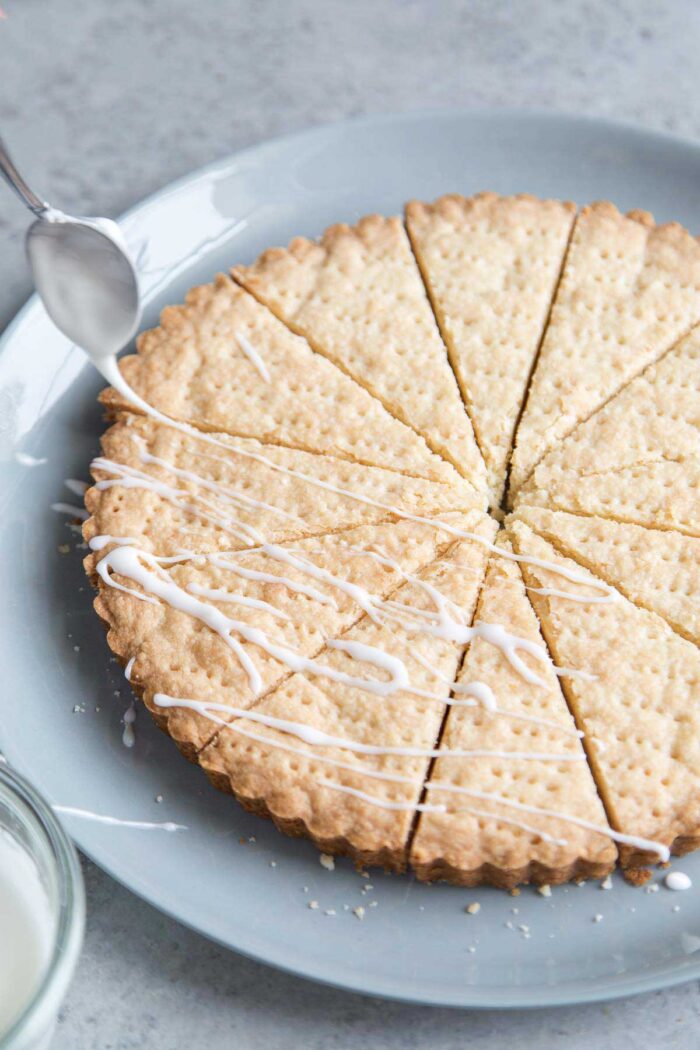
Quick Lemon Glaze
The simple glaze is a mixture of powdered sugar (also known as confectioners’s sugar), fresh squeezed lemon juice, and a touch of hot water.
For added flavor, try adding finely grated lemon zest. A drop of culinary lemon oil or a splash of lemon extract is another great way to incorporate flavor.
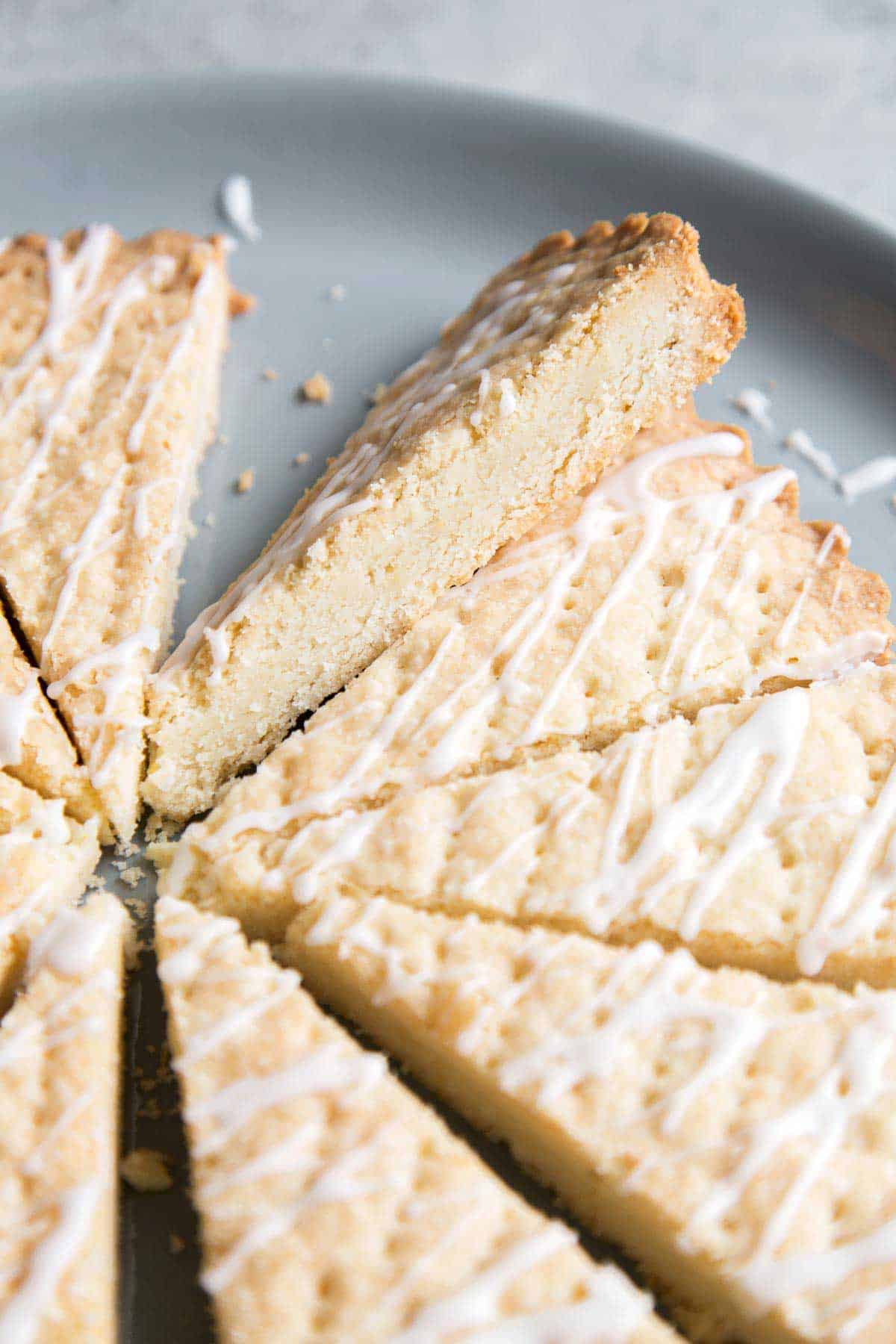
Unique Shortbread Recipes
- Black sesame shortbread cookies with hibiscus glaze
- Parmesan shortbread with caraway seeds
- Surprise pecan shortbread
Lemon Shortbread Cookies
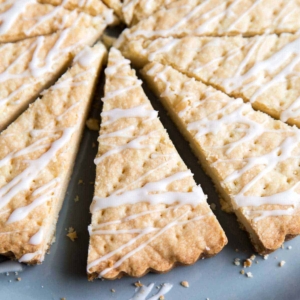
Equipment
- 9-inch fluted tart shell pan with removable bottom
Ingredients
- ½ cup granulated sugar, (100 g)
- 1 Tbsp finely grated lemon zest, (about 2 small lemons)
- 1 cup unsalted butter, (226 g), softened
- 2 cup all-purpose flour, (260 g)
- ½ cup cornstarch, (60 g)
- ½ teaspoon kosher salt
Glaze:
- ¾ cup confectioners' sugar, (90 g)
- 4 teaspoon fresh squeezed lemon juice
- 1 teaspoon hot water
Instructions
- Preheat oven to 350°F.
- Use a fine grater to zest lemon over sugar. Rub lemon zest into the sugar to extract as much flavor as possible. Set aside.
- In the bowl of stand mixer (or using an electric hand mixer), beat butter until smooth. Add lemon sugar. Beat on medium speed until creamy and smooth. Scrape down sides of bowl as needed to ensure thorough mixing.
- Whisk together flour, cornstarch, and salt. (If cornstarch is clumpy, sift before adding to flour.)
- Add flour mixture to mixing bowl. Mix on low speed until dough starts to form. Increase to medium speed and continue to mix until large clumps form and dough pulls away from the sides of the bowl.
- Dump dough clumps onto a 9-inch fluted tart shell pan with removable bottom. Use your fingers or the flat bottom of a drinking glass or measuring cup to press dough into an even layer.
- Bake for 35-40 minutes until the edges of the shortbread begin to color. It is better to err on the side of under-baked versus over-baked. Cool on wire rack for 5-10 minutes.
- Carefully unmold from tart shell pan. Place on cutting board. Use a sharp knife to divide shortbread into 12 wedges. *For clean slices, be sure to cut while shortbread is still WARM!
Glaze:
- Combine powdered sugar, lemon juice, and hot water in a medium bowl. Stir until mixture is smooth. Use a spoon to drizzle glaze over sliced lemon shortbread cookies.
Notes
- This recipe works with all citrus fruits. Try lime zest, orange zest, or grapefruit zest. Or, use a mixture of different citrus zest!
- This recipe was made using Diamond Crystal kosher salt.
- 1/2 teaspoon Diamond Crystal = 3/8 teaspoon Morton kosher salt = 1/4 teaspoon table salt
- To achieve clean slices, it is important to cut while the shortbread is still warm! If you wait too long, the shortbread will cool and firm up. Room temperature shortbread will likely crumble and fall apart when you try to slice it.
Nutrition
Nutrition information is automatically calculated, so should only be used as an approximation.
 Like this recipe? Rate & comment below!
Like this recipe? Rate & comment below!